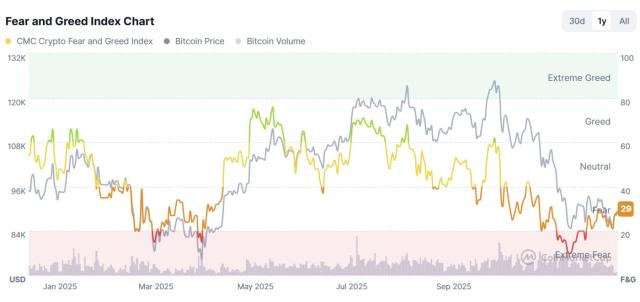Internet Capital Market — New Meta or Just Another Meme Hype

TL;DR:
Internet Capital Markets (ICM) offer a crypto-native alternative to traditional capital markets (TCM), letting founders raise funds directly from online communities via tokenization, bypassing venture capital and IPOs. Platforms like Believe App (formerly Clout) on Solana lead this movement, allowing users to launch and invest in tokens with minimal friction, sometimes just by tagging their X (Twitter) accounts.
Despite criticisms, such as the lack of regulatory oversight, low-effort or misleading tokens can be launched, ICM still holds strong potential for mass adoption by onboarding Web2 users into Web3 through simple UX, fiat onramps, and viral narratives. To succeed long term, platforms like Believe must go beyond hype by enforcing founder accountability, refining tokenomics, fostering DAO governance, and creating real utility, transforming ICM from a meme trend into a new capital formation paradigm.
Background in traditional capital markets (TCM)
In traditional capital markets (TCM), founders often rely on costly and time-consuming funding routes such as IPOs or venture capital. This creates a number of challenges.
On the sell side, founders are tackled with lengthy application processes, legal hurdles, and the constant pressure to appeal to investors, which often pulls focus away from actually building the product or community. On the buy side, access to early investment opportunities is typically reserved for large institutional players like hedge funds and mutual funds. Retail investors are left with little to no allocation, often entering the market only after valuations have surged.
This model not only creates inefficiencies and exclusivity but also misaligns incentives between creators and supporters. These structural issues highlight the need for a more open, direct, and participatory funding model — one that Internet Capital Markets (ICM) aims to solve.

What is ICM
ICM represents a new narrative in crypto. Startups and founders can fund their products directly over the internet, bypassing the lengthy procedures of TCM and receiving instant support from investors by tokenizing their ideas. Unlike in TCM, where banks hold investors’ initial shares, ICM gives investors direct control of their funds (tokens) through self-custody wallets. This approach lowers the barriers for investors to support founders and makes it easier for issuers to raise capital.
ICM Ecosystem Now
It’s worth noting that the idea of ICM is not just an experimental product narrative, it is deeply aligned with the strategic direction of Solana itself. In a marketing memo published by the Solana Foundation on November 27, 2024 [19], the Foundation outlined its vision for building “an internet-native successor to Nasdaq,” where anyone with a wallet and an internet connection can access capital markets. The memo envisions a world where financial assets, whether stocks, real estate, or cultural tokens, are accessible to anyone, anytime, through a globally connected ledger, eliminating many of the barriers that define traditional finance today.
Leading the ecosystem today is the Believe App (formerly Clout) on solana, which enables founders to launch their token just by tagging their X’s account. It aims to disrupt traditional venture capital by providing a decentralized, community-driven alternative that empowers builders and founders.


It began with Ben Pasternak, a Web2 founder and former Forbes “30 Under 30” honoree, launching his token, $Pasternak, on Clout in January [14]. The token skyrocketed to a ~$77M market cap but later collapsed due to technical issues, tokens couldn’t “graduate” even when the criteria were met. [15]
In late April, the platform rebranded from Clout to Believe, shifting its focus from individuals to ideas (ICM). $Pasternak was phased out, and the platform introduced $launchcoin. Believe gained traction after being retweeted by high-profile founders like Nikita Bier and Toly (co-founder of Solana). Adoption by tokens like $GOON and $NOODLE which both achieved strong market caps on Believe, helped push the platform to a peak of $314M MC, fueled by viral hype and growing user adoption. [16]
Comparing Clanker and Believe: Why Believe Can Succeed
Clanker is also another platform that allows users to launch tokens via social media interactions, specifically through tweeting or using Farcaster (a web3 twitter). However, despite this similarity, there are key differences that set Believe apart in terms of user experience, narrative, and growth potential.
- Ecosystem Impact
As shown in the graph below, the trading volume and number of active traders on Solana surpass those on Base, providing more momentum for Believe to grow. Support from Alliance dao, retweets from Nikita Bier and Toly also makes the growth faster.


2. User Experience


We can see that launching a coin on Believe is much simpler — users only need to provide a ticker and tag Believe — while Clanker requires more information, such as the name and the icon.
Additionally, Believe’s UI is more appealing and straightforward. They even have a mobile app available in the App Store, where users can buy tokens using a wallet or a credit card. In contrast, Clanker only has a website like other launchpads, and tokens can only be purchased with a wallet.

Clanker simplifies only the sell side of launching tokens, but buying tokens requires web3 knowledge (such as connecting a wallet and adding tokens on Base blockchain). Believe, on the other hand, allows users to launch and buy tokens without any web3 knowledge, you can launch a token via Twitter and purchase it with a credit card or Apple Pay. This lowers the barrier to entry and attracts users from outside the web3 space. For example, Alex Leiman, a web2 founder who built noodle.gg, a web3 game like slither.io, chose to launch its token $noodle on Believe. [9]
3. Narrative & Vision: ICM vs. Meme Launchpad
Believe pioneers the Internet Capital Markets (ICM) narrative, emphasizing tokens tied to ideas and projects requiring funding, rather than just memecoins. This higher purpose resonates with communities seeking meaningful engagement and sustainable
value creation. Clanker, by contrast, is perceived primarily as a meme launchpad focused on token creation and trading, lacking a broader narrative or long-term vision. This limits its appeal beyond short-term speculation.
Why it might be just another Meme Hype
The idea behind ICM is really appealing. However, there is always a tradeoff between saving time and sacrificing certain protections.
- Nothing Promised by the Founders
Unlike TCM, where projects undergo thorough pitching, full due diligence, and regulatory approval before an IPO, ICM allows founders to launch their coins simply by tagging Believe on their official Twitter accounts. However, there is no guarantee or formal commitment from founders to deliver on their promises. This lack of accountability raises concerns, especially when even official accounts, such as those of presidents, can retweet contract addresses of a token and later claim hacks or delete posts, highlighting the risks of this open and unregulated model.

This highlights the significant disconnect between the token itself and the underlying project. According to the playbook, the token essentially functions like a memecoin, it has no real utility and exists primarily as a way for supporters to back the founder. While this can indeed help founders advance their projects, investors may mistakenly believe that ICM provides a good investment opportunity. Many think they are acting as angel investors helping struggling founders, but in reality, the token makes no promises or guarantees of returns.
2. Misused narrative

The current market data clearly shows how the original intent of ICM, to support founders and their projects, is being misused. Among the top three tokens by market cap on the platform, two are essentially memecoins. While ICM is meant to empower genuine builders, it’s funny to see that many are exploiting the narrative as just another meme-driven hype, and these kinds of tokens become more famous than those projects in need. [17]
What’s the next step of ICM
Launching a token on Believe currently comes at no cost, but its long-term value is closely tied to the project’s actual progress. To keep founders accountable, Believe may need to rethink its tokenomics — introducing smart contract-based penalties for inactive teams, or using DAO governance to let communities vote on project updates.
While ICM is still emerging, it has real potential to onboard Web2 users — much like how TON leveraged Telegram. The concept works because it lowers the mental barrier to crypto participation. That said, the platform isn’t perfect. Believe recently paused its @launch feature due to a surge in low-effort tokens, sacrificing one of its most viral tools to preserve the ICM narrative. If it can build stronger detection systems — whether AI-based or human-reviewed — a more secure @-to-launch flow could return.
For now, it’s encouraging to see Believe trading short-term volume for long-term trust. It’s also gaining ground on Pump.fun in market share, which helps reduce centralized sell pressure on Solana. More competition, more accountability — that’s how ICM might stick. [17]

In the short run, if Believe can continue competing effectively with traditional launchpads, the ICM narrative has the potential to endure long term, as mass adoption remains the ultimate goal for the ecosystem. However, for Believe to truly stand its place and avoid becoming just another hype like Clanker, it must strengthen and expand its unique ICM narrative beyond simply being a launchpad.

This means building deeper utility around the concept of Internet Capital Markets, such as fostering meaningful community governance, enabling continuous creator accountability, and integrating real-world use cases that resonate with broader audiences.
Without evolving in this way, Believe risks being perceived as a meme-driven platform, losing the momentum needed for sustainable growth. To achieve lasting impact, Believe must position itself as a platform that not only launches meme tokens but also empowers ideas, movements, and projects to thrive in a mass-adopted Web3 environment.
Sources
[1] Lily Liu. 2025. Building Internet Capital Markets on Solana — TOKEN2049 Dubai 2025. Retrieved from https://www.youtube.com/watch?v=QXAshrNDBVY
[2] Manoppo, Marco (@ManoppoMarco). 2025. LaunchCoin tokenomics workflow. Retrieved from https://x.com/ManoppoMarco/status/1922713575594000892/photo/4
[3] Dexscreener. 2025. LaunchCoin price chart. Retrieved from https://dexscreener.com/solana/yrrustgpugdp8bbfosqdefssen6sa75zs1qjvgnhtmy
(Annotations by author)
[4] Cointoshi. 2025. Solana Memecoin Trading Metrics. Dune Analytics. Retrieved from https://dune.com/cointoshi/solmemes
[5] Clanker Protection Team. 2025. Daily Volume of Tokens Deployed: Clanker vs. Pump Fun. Dune Analytics. Retrieved from https://dune.com/clanker_protection_team/clanker-vs-others
[6] Saputra, Rifqi (@denyosapone). 2025. Token deployment post for FISH AI. X post, May 3, 2025. Retrieved from https://x.com/derrysapone/status/1918381979332157725
[7] van Goon, Pata (@basedalexandoor). 2025. Token deployment post for $GOONC. X post, May 13, 2025. Retrieved from https://x.com/basedalexandoor/status/1922114549815099698
[8] Believe. 2025. Believe app interface screenshot. Retrieved from the Believe mobile application, May 20, 2025.
[9] Believe (@believeapp). 2025. $NOODLE just launched on Believe. Built by @alex_leiman. X post, May 13, 2025. Retrieved from https://x.com/believeapp/status/1922075588115775489
[10] Clout. 2025. Legal guidelines for creators. Clout Playbook. Retrieved from https://www.clout.me/playbook
[11] Believe Screener. 2025. Market data dashboard of the Believe ecosystem. Retrieved from https://www.believescreener.com/
[12] BeinCrypto. 2025. Solana Launchpads Daily Active Addresses. Dune Analytics. Retrieved from https://dune.com/beincrypto/solana-launchpads
[13] GMGN.ai. 2025. Let’sBonk token ($BONK) price chart. Retrieved from https://gmgn.ai/sol/token/CDBdbNqmrLu1PcgjrFG52yxg71QnFhBZcUE6PSFdbonk
[14] Wikipedia contributors. 2025. Ben Pasternak. Wikipedia. Retrieved May 22, 2025, from https://en.wikipedia.org/wiki/Ben_Pasternak
[15] Finet.hk. 2024. 一键发币平台 Believe 崛起,掀起港人发币热潮. Retrieved from https://www.finet.hk/newscenter/news_content/68246ac8800d456e80466411
[16] 加密克里斯. 2024. Believe 上线!一键发币平台,全网最强 Launchpad?Retrieved from https://www.youtube.com/watch?v=lrGD3oo7gh8
[17] Coinsider. 2024. Solana 2024: Pump.fun, Rug AI, Believe, Clout, Launch Labs… Retrieved from https://www.youtube.com/watch?v=oQje6i_7LQs
[18] Frankenfield, J. 2023. How Much of the World’s Money Is in Bitcoin? Investopedia. Retrieved from https://www.investopedia.com/tech/how-much-worlds-money-bitcoin/
[19] BlockBeats. 2024. Revealing the Solana Foundation Marketing Memo: The Perfect Victory of Internet Capital and the F.A.T. Principle. Published November 27, 2024. Retrieved from https://en.theblockbeats.news/news/55923

Internet Capital Market — New Meta or Just Another Meme Hype was originally published in IOSG Ventures on Medium, where people are continuing the conversation by highlighting and responding to this story.







